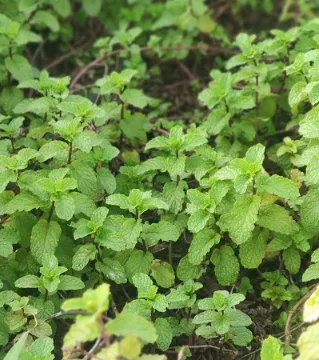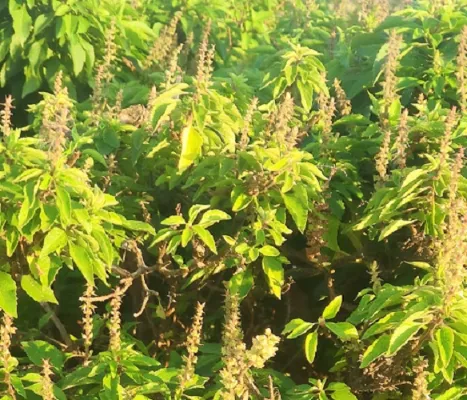

Solapur Forest Department
Menu



According to the beliefs of scholars, Saint Rohidas was born around 1450 in Mandur, near the city of Kashi in Uttar Pradesh. His parents were named Raghu and Kalsi. His father was a leather worker by profession. Growing up in a family engaged in the leather trade, his family was considered untouchables. However, Saint Rohidas' interests were more inclined towards spirituality, and he often spent time near the banks of the Ganges river. He was recognized in society as a saint, poet, social reformer, and spiritual guru. He wrote numerous poems, each of which reflected commentary on various social issues such as struggle and oppression, war and peace, renunciation, and the yogic way of life. He also expressed his desire through his life to be a ideal example for others. A collection of his 41 poems is included in the sacred Guru Granth Sahib, a religious scripture. During the 15th and 16th centuries, he was a prominent saint-poet in the Indian devotional movement. His devotional songs had a significant impact on the people of Punjab, Uttar Pradesh, Rajasthan, Madhya Pradesh, and Maharashtra. Saint Rohidas traveled to Andhra Pradesh, Maharashtra, Gujarat, Rajasthan, and Himachal Pradesh on pilgrimages. His poetry and devotional songs in regional languages were very popular. Through his discourses and songs, he provided enlightenment, education, and guidance to people of various backgrounds. Saint Rohidas is recognized or referred to by different names in different regions of India. For instance, he is known as Ruidas in Bengal, Rohidas in Rajasthan, Ravidas or Rohidas in Maharashtra, and Raidas in Punjab. Saint Rohidas passed away around 1520 near Chittorgarh, Rajasthan, and his samadhi (memorial) was established where his footwear were found. Every year, on the fourteenth day of the waxing moon in the month of Chaitra, "Saint Rohidas Punyatithi" is celebrated, and many devotees pay their respects at his memorial site on this occasion

स्वयंपाकात स्वाद आणि सुगंधासाठी याची पाने वापरली जातात.

स्वयंपाकात स्वाद आणि सुगंधासाठी वापरली जाणारी तुळस. याची उंची अतिशय कमी असते. याची पाने लहान व लंबगोलाकार असतात. पानांचा पृष्ठभाग हा थोडा खडबडीत असतो. पाने चुरल्यावर अतिशय सुंदर असा वास पसरतो

याची पाने देखील थोडी लांबट आकाराची असतात. मंद सुगंध असतो. पाने चूरल्यास लिंबासारखा वास येतो

याची पाने इतर तुळशींच्या मानाने लांब असतात. ही पाने चुरल्यास त्यांचा मारीगोल्डच्या फुलांसारखा वास येतो.

आपल्या येथे सब्जाचे झाड खास त्याच्या बियांसाठी लावले जाते. शरीराला थंडावा देणारा सब्जा उन्हाळ्यात महत्वाचा ठरतो. जागोजागी मिळणारा वर्ल्ड फेमस फालुदा, सब्जा शिवाय बनू शकत नाही. या तुळशीची पाने व बिया सरबतात घालून प्यायल्याने उष्णता कमी होते. विंचू दंशावर सब्जा तुळशीचा पाला चुरडून लावला जातो

अतिशय तीव्र असा सुवास असलेली ही तुळस विशेष औषधी आहे. याची फुले लाल रंगाची असतात. पानांचा चोथा त्वचाविकारांवर वापरला जातो. तसेच न भरणाऱ्या जखमांवरही हा पाला लावला जातो. जंगली पद्धतीने वाढणाऱ्या या तुळशीचे ‘रान तुळस’ असेही नाव आहे

या तुळशीचे खोड, पाने, व मंजिऱ्या कमी-अधिक प्रमाणात गडद जांभळ्या रंगाची असतात. उन्हात वाढलेल्या व जुन्या झाडांमध्ये हा रंग जास्त ठळकपणे उठून दिसतो. याच तुळशीला ‘काळी तुळस’, असेही संबोधले जाते. या तुळशीचे पाने खाल्ल्याने सर्दी-खोकला, ताप यावर लवकर आराम मिळतो

राम तुळस ही मोठ्या पानांची, उंच व रानटी पद्धतीने वाढणारी तुळस आहे. याची पाने पोपटी रंगाची असतात. या तुळशीच्या पानांना लवंग सदृश, मसालेदार असा सुवास येतो. पोटाच्या विकारांसाठी ही तुळस उपयुक्त आहे. या तुळशीला ‘लवंगी तुळस’, असेही संबोधले जाते